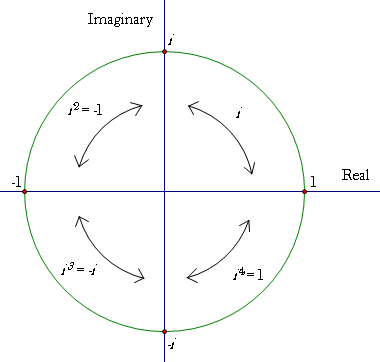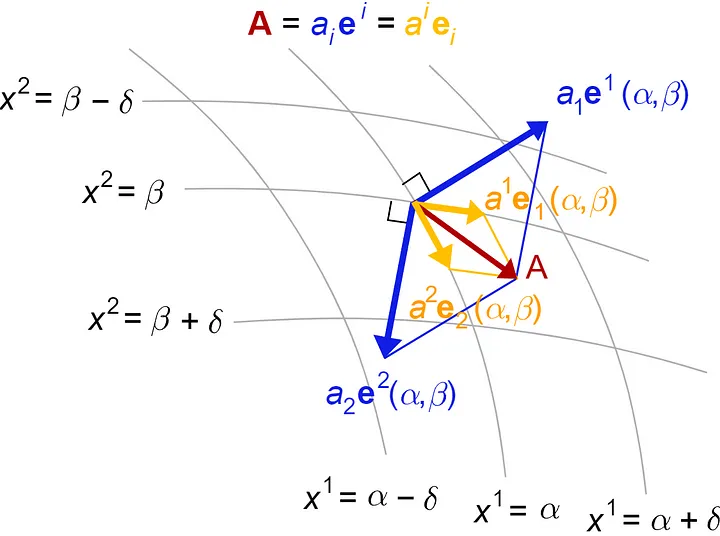In our previous entry in our introduction to special relativity, we introduced the interval, or proper time, which provides a four-dimensional extension of length:
And we noticed the oddity that this extension of squared length seems to have a negative term.
Of course, there is a way that squaring some element can give us a negative number, if time is an imaginary quantity. Let's consider the case of one spatial dimension. A general vector representing a separation between two events, Δ, with one time and one space component, might be written as:
This has some convenience, since it clearly separates space from time within the term in a manner similar to basis vectors. We can express events using the complex plane, where the imaginary axis becomes the temporal axis and the real axis a spatial axis.


As discussed before, a boost can be viewed as a rotation in 4 dimensions. Rotations in the complex plane can be described according to Euler's formula:
A rotation by the angle, ϕ, is a multiplication by this unit norm complex number.
We therefore need only find a way to relate this unusual spacetime angle to velocity. Keep in mind that if time is imaginary then so must be the time derivative:
Remember that the tangent is the derivative dx/dτ:
So we can find the angle, with one tiny wrinkle, that imaginary unit. When that appears, we need to invoke hyperbolic trig functions to move it outside the function:
Thanks to similar relationships, we can rewrite our sine and cosine terms above using their hyperbolic equivalents as below, where we'll make the substitution ϕ → iϕ to simplify our expression:
And thanks to some basic properties of hyperbolic trig functions:
Demonstrating that we can quite easily rewrite our earlier matrix representation of the boost using this new angle we've introduced, which is termed the rapidity. This is equivalent to the boost matrix from before:
Rapidity is often useful as it allows for adding velocities easily. Two successive boosts can be represented using the same formalism as:
So rapidity has utility outside the niche application of imaginary time. We can move between complex and matrix representations of a two dimensional system by the comparison:
And from this we'll finally express the Lorentz Boost in 2d using a purely complex representation:
Plotting the complex rotation term we see that both the real (cosh) and imaginary (sinh) components explode as rapidity approaches ±10. Note also that, plotting β in terms of rapidity, we'll see that it asymptotically approaches 1 well before rapidity reaches 10:


The imaginary time formalism isn't very popular as it does not provide much in the way of insight beyond more traditional four-vectors. And you know what's better than using an obscure formalism to derive a useful tool? Jumping from it into an entirely new formalism! After all, space isn't one dimensional, it's three dimensional. To generalize complex spacetime, let's find a 3+1d representation. Fortunately, exactly such a number system exists, quaternions. Can we find a quaternion formalism that effectively describes special relativity? Let's see.





